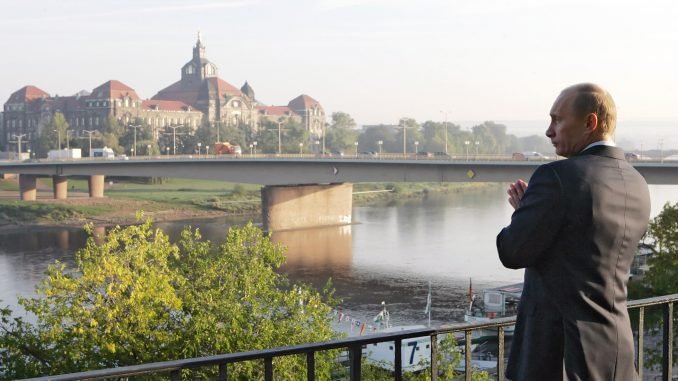
Under Boris Yeltsin, oil had sold for about USD 20 per barrel. Over the subsequent decade, the prices soared to USD 140. Russians largely escaped the short slump following the 2008 global financial crisis because the government used some of the accumulated oil money to cushion the shock. Russia was the only country where, while all economic indices took a hit, public sector salaries and social benefits grew. Putin’s regime thus bought peace.
The party paid for by the oil dollars lasted almost 15 years. Putin has convinced himself that he could get Europe hooked on the Russian gas and succumb to his whims. No one argued with him, Europe even allowed to build a pipeline under the Baltic Sea, the Nord Stream, to Germany. It is unclear now whether this very expensive project will ever break even, as both the price and volume of gas pumped through it is going down.
Europe regards gas and oil as commodities. When Putin made clear that, for him, they are not just commodities but rather weapons, changes ensued. Gazprom’s exports to the European Union have been shrinking every year. The EU’s Third Energy Package is effectively in place, unbundling gas supply and pipeline network ownership and thus undermining the monopoly. The package dealt a blow to the South Stream project near the shores of Bulgaria.
And so comes a dry spell to Russia, a consequence of Putin’s government. The country’s corruption-ridden economy started stalling several years ago, meanwhile talks about developing hi-tech industry and freeing Russia from dependence on selling raw materials remained just talks. Not because of laziness – simply the system, designed for enriching the select few, is not suited for anything else.
VW Phaeton plus Audi A8 equals Russian limousine
Putin simply updated the old Soviet system which used oil as the main source of income in foreign currencies. There was nothing else to export, since the produce of the Soviet industry could satisfy no one but the local populations who had no choice. Since war industry was given top priority, the Soviets had to restrict imports and produce their own consumer goods.
The most popular pasta tubes, served in all canteens across the country, were 7.62mm in diameter – just like the ammo for Kalashnikovs. So the pasta-making equipment could be used to make cartridge cases. Or it could be the other way round. Driver cabins of agricultural machinery were hardly more comfortable than in tanks or armoured vehicles. But the state managed to provide its people with consumer essentials – if not shoes, then at least galoshes; if not with clothes, then at least fabric for home-made garments.
Imports made up just a drop in the ocean and it all went to the Soviet nomenclature. Wearing Salamander shoes or a Finnish jacket signified that one had access to privilege. Algirdas Brazauskas (leader of the Lithuanian Communist Party) and Justas Paleckis (nominal head of state of the Lithuanian SSR) could drink Czech beer, while the masses had to make do with the “Žigulinis”.
As he tried to put Russia back on its feet, Putin pushed it into utter dependence on foreign markets. A gas station can function only as long as it sells gas; it does not produce anything, just buys things for the gas money. Russia is now Europe’s gas station. When Deputy Prime Minister Dmitry Rogozin tweeted sneers at the West, he did so using Western equipment and technology.
Putin continues to use Mercedes limousines – a bit of a problem considering his late anti-Western rhetoric. So he ordered the ZIL factory to design a Russian limousine. It turned out that Russia could not make even a decent engine, so the factory had to commission Porsche to make one for the presidential limousine.
Another Russian factory, GAZ, also took up the challenge of producing Russian limousines for lower-ranking officials. Their idea is to put something together from VW Phaeton and Audi A8. This will doubtlessly be presented as a new step in Russia’s car industry.
Continue reading Putin’s party paid for by oil money (II)

Be the first to comment